Explore practical steps to effectively insulate a metal garage, enhancing its energy efficiency and creating a comfortable workspace for year-round use.
Insulating a metal garage can be a game-changer for your workspace, providing a comfortable environment year-round. This task, though seemingly daunting, can be accomplished with the right tools and a bit of know-how.
From choosing the right type of insulation for your space to the installation process, this article covers everything you need to know. Whether you’re dealing with heat, cold, or noise issues, this comprehensive guide will walk you through the steps to effectively insulate your metal garage.
So, let’s dive into the details to transform your metal garage into a well-insulated haven.
Key takeaways:
- Insulating a metal garage creates a comfortable year-round workspace.
- Benefits include energy savings, noise reduction, and prevention of condensation.
- Understand R-Value, U-Value, and Perm Ratings when choosing insulation.
- Consider climate, garage purpose, budget, and building codes when insulating.
- Choose the right type of insulation for walls and roof to optimize energy efficiency.
Benefits of Insulating Your Metal Garage

With insulation, utilising your metal garage throughout the year becomes much more feasible, offering protection from both sweltering summer heat and chilling winter cold. This means that whatever you choose to use your garage for – be it a workshop, storage area, or a space for your vehicles – it effectively maintains a comfortable climate.
Moreover, insulation significantly minimizes noise levels. Whether the noise originates from inside the garage – like machinery or tools in use – or outside sources such as traffic or weather, the sound is absorbed by the insulation, creating a quieter, more pleasant environment.
Furthermore, perhaps the most compelling benefit of insulation is the potential energy savings. By mitigating the escape of heated or cooled air, your energy bills can be drastically reduced as there will be less need to continuously run heating or cooling units.
Finally, insulation also helps in preventing condensation, which can prolong the life of your metal garage. This can shield your garage from rusting, mold, and other damage caused by moisture buildup, preserving your investment in the long term.
Understanding R-Value, U-Value, and Perm Ratings
Navigating the technical language surrounding insulation can seem intimidating at first. However, stretching your understanding to three primary terms – R-Value, U-Value, and Perm Ratings – can help you separate the wheat from the chaff when choosing the right material.
The R-Value is essentially the measure of resistance to heat flow a material provides. Higher R-values correspond to greater insulation efficiency.
On the other hand, U-Value reflects the level of heat transfer through the material. It is the reciprocal of the R-Value, in other words, the lower the U-Value, the better the material will be at preventing heat transfer – exactly what one should look for in good insulation.
Perm Rating is a measure of water vapor permeability. A material with a low Perm Rating is less likely to let vapor seep through, maximizing the durability of your insulation.
By considering these three factors, you will ensure that your chosen insulation isn’t just effective at temperature control, but also resistant to the wear and tear associated with moisture damage.
Factors to Consider When Insulating a Metal Garage

Before embarking on the insulation journey, a few critical aspects warrant consideration.
1. Climate: Depending on the region’s weather patterns, different insulation methods may prove more advantageous. For example, a humid region might benefit more from spray foam, while a colder climate might necessitate rigid board insulation.
2. Purpose of garage: Whether the garage is used merely for storage, a workspace, or living space will significantly influence the type of insulation required.
3. Budget: Costs vary greatly, from cheaper options like blanket insulation to pricier ones such as spray foam. Determine your budget constraints to narrow down choices.
4. Building code requirements: Depending on the area, certain types and levels of insulation may be required or limited by local building codes.
5. Garage structure: The construction and design of the garage might determine the fitting insulation type. Detached garages might need more robust insulating methods, whereas an attached garage shares some of its conditioned space with the main house.
6. Energy efficiency goals: Consider the level of energy savings anticipated. Higher R-Value insulation types can contribute significantly to reducing energy costs.
This decision-making process will help tailor an insulation practice best suited to your metal garage’s unique specifications.
Types of Metal Garage Roof Insulation
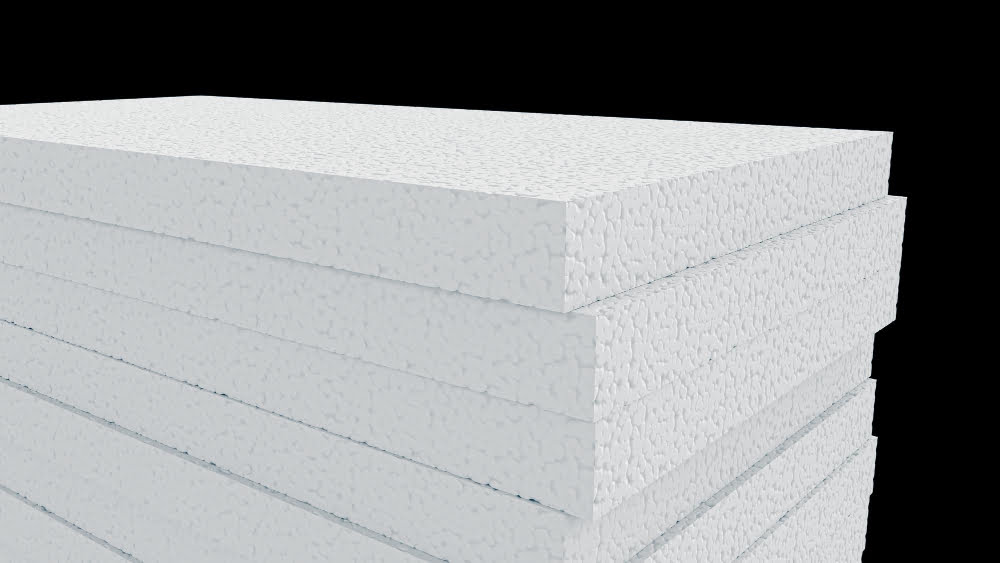
When it comes to roofing, consider two primary types of insulators: rigid board insulation and spray foam insulation. Rigid board, typically composed of polystyrene, polyisocyanurate (PIR), or polyurethane, offers high R-value—resistance to heat flow—making it an effective barrier against heat transfer. Different thicknesses are available to cater to varying insulation requirements.
Spray foam insulation, on the other hand, can fill cracks and gaps in the roof structure, providing both insulation and air sealing. It comes in two forms—open-cell (light, less dense) and closed-cell (heavier, more dense)—which have different insulation performances and prices.
In special circumstances, radiant barrier insulations might be a worthy consideration. These thin sheets of shiny aluminum reflect heat back to its source, serving as an excellent option for hotter climates.
Remember, choosing the appropriate roof insulation needs careful thought. Consider cost-efficiency, climate, your garage’s intended purpose, and local building codes when making your decision.
Types of Metal Garage Wall Insulation
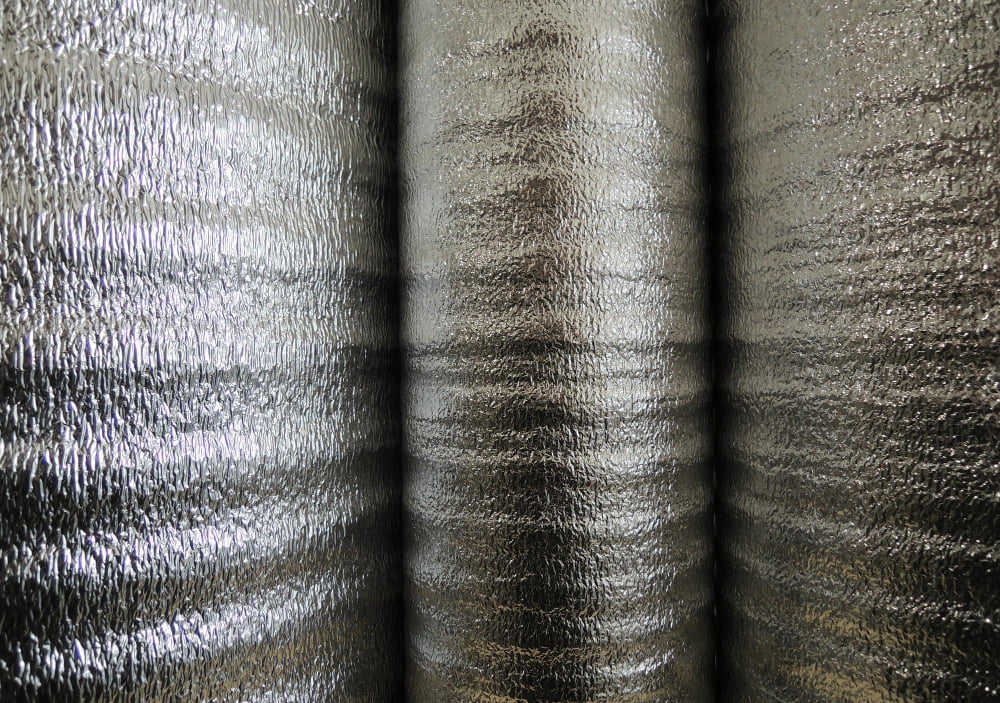
There’s a broad range of insulation materials that one can utilize in the walls of a metal garage. Each has its perks and pitfalls, catering to different needs and budgets.
Batt and roll insulation, often made of fibreglass or mineral wool, is a cost-effective option. It’s simple to work with, but might not snugly fit into irregular spaces. These gaps can lessen the overall effectiveness of the insulation.
Spray foam insulation offers superior performance and complete coverage, filling in all cavities and hard-to-insulate corners. It, however, is pricier and requires professional application due to chemicals involved.
Rigid board insulation, composed of polystyrene, polyisocyanurate or polyurethane, is excellent for thin walls. It protrudes less into the interior space, conserving your garage space.
Reflective foil insulation works by bouncing off radiant heat, making it most functional in hotter climates. It is conveniently light, easy to install, but it requires an air space of at least an inch on one side to work effectively.
Whichever type you choose, ensure it suits your needs, budget, local climate, and garage use. A well-insulated garage can drastically increase energy efficiency, providing a more comfortable environment while potentially reducing your energy bills.
Using Batt and Roll Insulation in Metal Garages
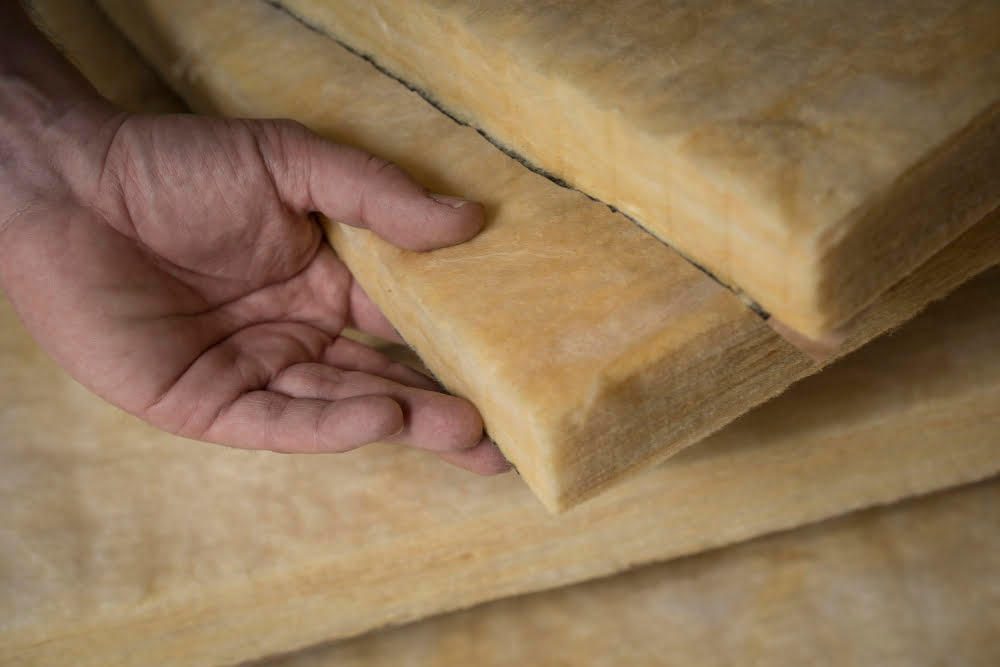
Batt and roll insulation, often made from fiberglass, is a cost-effective way of increasing the thermal control capabilities of your garage. When insulating your metal garage with batts or rolls, several key considerations are pivotal for efficacy and longevity.
1. R-Value: Batt and roll insulation comes in different R-values, which measures the material’s thermal resistance. An R-value around R-13 to R-19 is typically suitable for metal garages.
2. Placement: Apply batt or roll insulation between the wall studs and roof rafters. Ensure a snug fit without compressing the insulation, as this would reduce its R-value.
3. Moisture Protection: As the material is susceptible to moisture damage, it’s essential to include a vapor barrier or use batts pre-faced with a foil or paper acting as one. This controls condensation and prevents potential mold growth or material degradation.
4. Safety: Fiberglass can release tiny particles, harmful when inhaled or when they come in contact with skin. Therefore, always use personal protective equipment like a face mask, gloves, and eyes protection during installation.
Remember, proper installation of batt and roll insulation contributes to efficiently preserved heat during chilly winters and cooler indoor conditions throughout scorching summer months.
The Benefits of Spray Foam Insulation
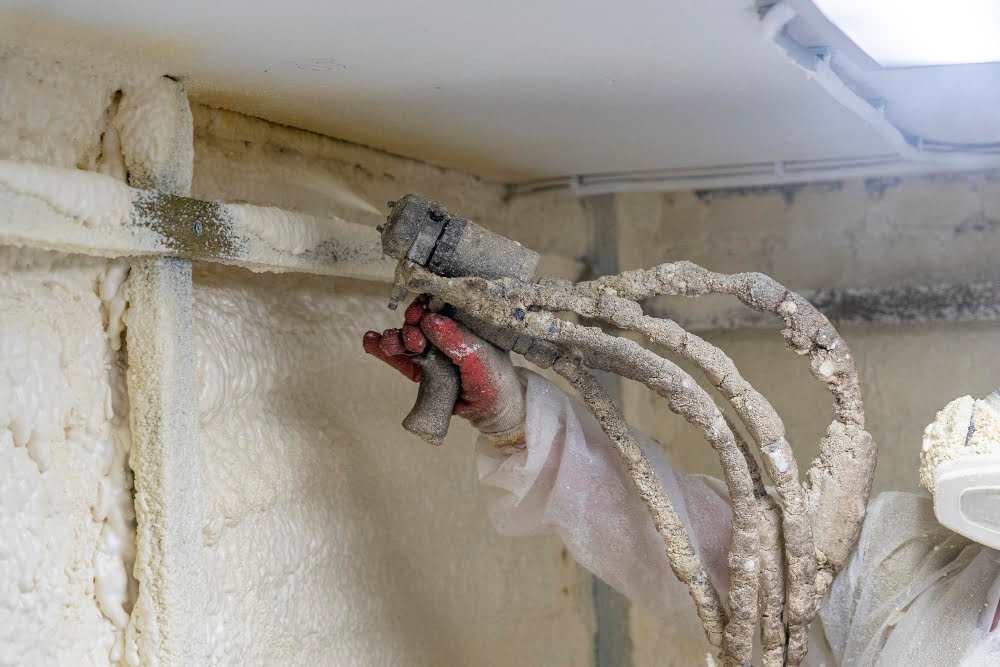
Spray foam is a unique and versatile insulation choice. Offered in open-cell or closed-cell form, it possesses an exceptional ability to fill and insulate every crevice of the garage, making it ideal for irregular or hard-to-reach areas.
Its high R-value (up to 6.5 per inch for closed-cell) gives it superior thermal resistance capabilities, translating into better heat retention in winter and cooling in summer. With its soundproofing qualities, you can keep the garage activities from disturbing the household or neighbors.
Its water-resistance deters moisture, preventing mold and corrosion – common issues in metal garages. This insulation method might have a higher installation cost, but the energy savings, in the long run, make it a cost-effective option.
It’s also worth mentioning that it adds structural strength to your garage, thanks to its rigid composition, making the structure more resistant to wear and damage.
Understanding Reflective Foil Insulation
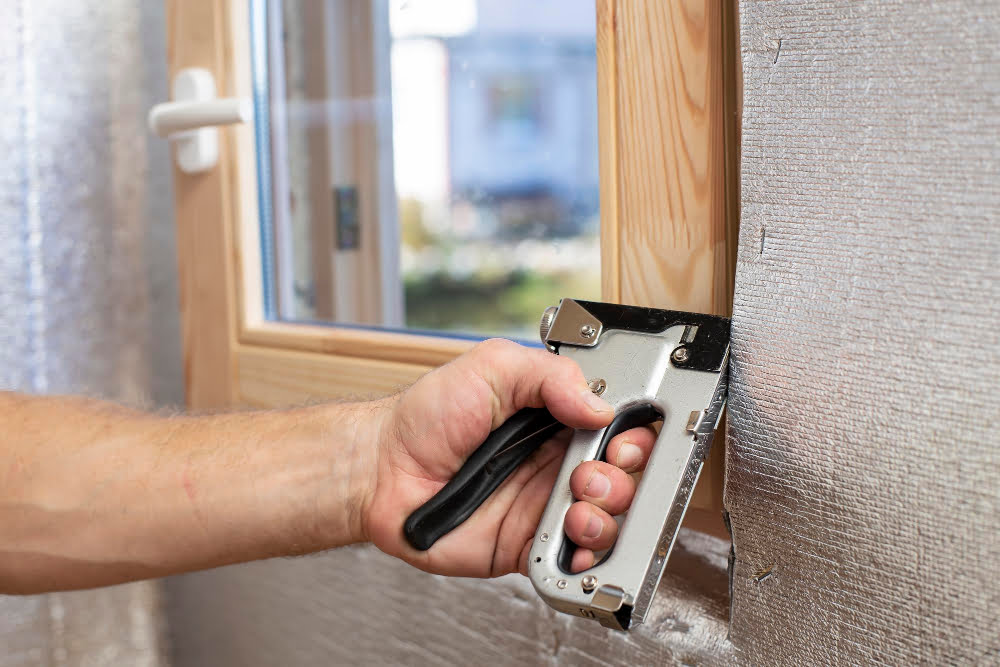
Reflective foil insulation, also known as radiant barrier insulation, works on the principle of reflecting radiant heat rather than absorbing it. It consists of a layer of aluminum foil backed by paper or plastic. This type of insulation is especially effective in metal garages due to its unique properties. The silver foil reflects up to 97% of radiant heat, minimizing the transfer from outside to inside during summer and vice versa in winter.
Particularly suitable for hot climates, reflective foil insulation reduces the need for air conditioning. This insulation is resistant to moisture and doesn’t become less effective when wet. However, it should be noted that reflective foil insulation has a relatively lower R-value compared to other options, which means it’s less effective at slowing down the conduction of heat. To boost its efficiency, radiant barrier is often paired with other insulation types.
Reflective foil insulation is also quick and easy to install. It can simply be stapled or glued onto the walls or roof of the garage. Remember to leave a gap of at least ¾ inch between the insulation and the metal surface to allow for airflow.
The Use of Rigid Board Insulation in Metal Garages
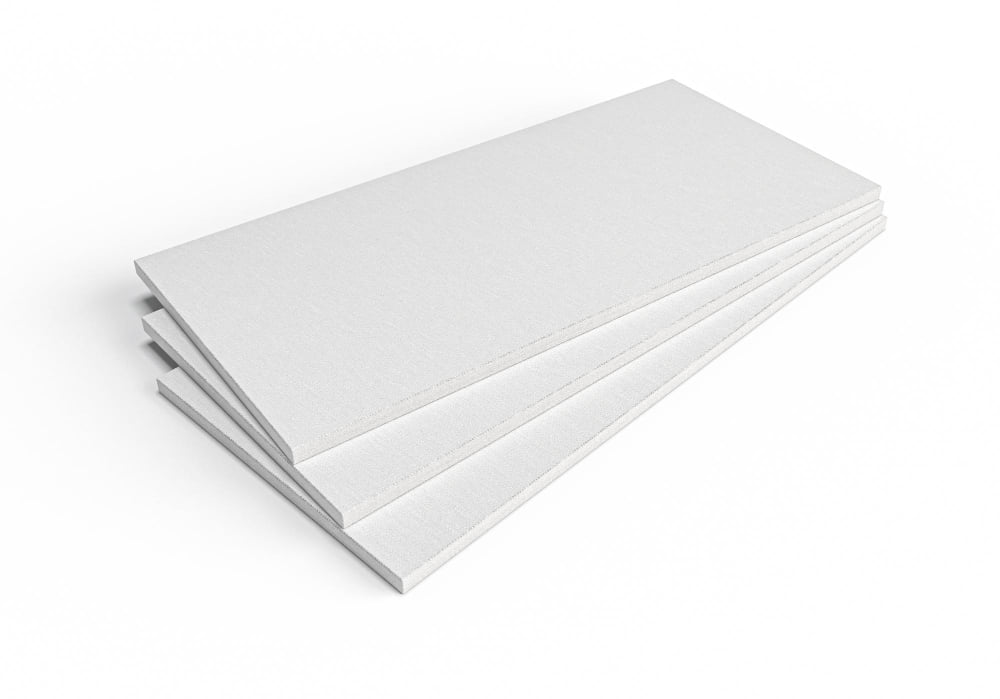
Opting for rigid board insulation for your metal garage can be a wise choice, particularly if you’re looking for robust insulation with excellent moisture resistance. This insulation type is composed of dense sheets of foam and is typically an inch or two thick. It’s a great selection when there’s limited space, as it offers high insulating value per inch.
Three crucial factors set rigid board apart. Firstly, its superior R-value (4 to 8 per inch) makes it ideal for controlling heat transfer. Secondly, it handles moisture-related issues very effectively, since it gets sandwiched between sheets of exterior grade plywood, thus preventing potential mold growth. Lastly, its durable construction doesn’t sag over time and withstands the occasional knock without significant damage.
When installing, consider two main methods: exterior and interior. Placing it on the structure’s exterior reduces thermal bridging and increases energy efficiency. However, this method requires a weather-resistant barrier. In the interior method, the boards are cut to fit between garage studs, ensuring a snug fit for maximum insulation effectiveness. High standards of precision are required to avoid air leaks around the edges.
Note that while rigid board insulation provides excellent performance, it can be pricier than other options. However, its long-term benefits of energy savings and sturdiness could potentially outweigh its initial costs. This insulation type is ideal for homeowners who prioritize durability, energy efficiency, and moisture resistance.
Loose-fill Insulation: What You Need to Know

Loose-fill insulation, often made from cellulose, fiberglass, or mineral wool, is unique due to its flexible nature. Its key advantage lies in its ability to fit into any space without disturbing structures or finishes. This makes it ideal for irregularly shaped areas and small spaces that are hard to reach with other forms of insulation.
One critical point to remember, it’s blown into spaces using special equipment, which is a task that may require a professional installer.
While the upfront costs may be higher, long term benefits include higher R-value per inch compared to traditional batt insulation, providing better thermal insulation. Another plus, loose-fill insulation is often made from recycled materials, making it an eco-friendly choice.
It is worth noting, however, that loose-fill insulation can settle over time. This settling can reduce its original R-value, which means a top-up may be required as part of your garage maintenance in the long run.
Ventilation is also a consideration. Too much insulation can restrict airflow which is essential in a metal garage to prevent condensation, rust, and other dampness-related issues.
Overall, this form of insulation is an effective option that provides both coverage and thermal benefits to your metal garage.
Single-Layer Faced Fiberglass Blanket Insulation for Metal Garages

This type of insulation is superior in managing both heat flow and noise reduction in metal garages. It’s rolled out between the girts and purlins, acting as an initial shielding layer.
Here are critical points to consider:
- 1. Thermal Efficiency: The fiberglass components act as barriers to radiant heat, effectively reducing heat transfer and maintaining a comfortable temperature in the garage.
- 2. Noise Reduction: The dense composition of fiberglass significantly dampens exterior noises for a serene garage interior.
- 3. Ease of Installation: Rolled out easily and tacked into place, no specialized knowledge is necessary.
- 4. Cost-Effective: Compared to other insulation techniques, faced fiberglass is relatively economical while delivering promising results.
Moreover, ensure an appropriate vapor barrier is in place when installing as it lowers the risk of moisture accumulation, preventing potential damage to the insulation and metal structure. Properly executed, single-layer faced fiberglass blankets can be an effective solution for insulating metal garages.
The Sag and Bag Two-Layer Insulation System
This insulation application is exceptional for controlling heat transfer, making it ideal for regions with drastic temperature shifts. The first layer is installed sagging between the purlins which are horizontal support beams in the framing— hence the term, ‘sag.’ This layer typically has a lower R-value, a measure of its resistance to conductive heat flow.
The second insulation layer, the ‘bag,’ is installed over the purlins and has a higher R-value, creating a barrier that resists both radiant and conductive heat transfer. By combining these layers, heat transfer is minimized while moisture control is maximized, resulting in greater energy efficiency and more comfortable interior temperatures.
While the installation process is more labor-intensive than some other methods, the benefits often outweigh the extra effort. During installation, it’s essential to ensure that the layers are securely attached to prevent potential damage and to maximize their effectiveness. A well-installed sag and bag insulation system can significantly enhance the longevity and functionality of a metal garage.
Understanding Fabric Liner Insulation Systems
This type of insulation system features a unique design that includes a vapour retarder, thermal break, and added R-value. The fabric liner system is typically made up of long-lasting, sturdy fabric that’s often white to reflect light and brighten the interior of your garage. Its superior aesthetic value makes it a popular choice for residential garages.
When deciding to use a fabric liner system, keep in mind that it requires a professional to install due to its complexity. It’s also important to steer clear of using it in spaces susceptible to damage because fixing it can be complicated. Because it is relatively lightweight, it doesn’t put undue stress on the garage structure, a valuable feature to minimize wear and tear. Additionally, the system can be custom-fitted, allowing for efficient use in garages with unusual or specific sizing.
Remember, fabric liner systems not only serve an aesthetic purpose but provide good insulation, making your garage warmer in the winter and cooler in the summer. They also offer a distinct acoustic advantage, reducing noise pollution within your garage space.
The Advantages of Insulated Metal Panels in Garage Buildings
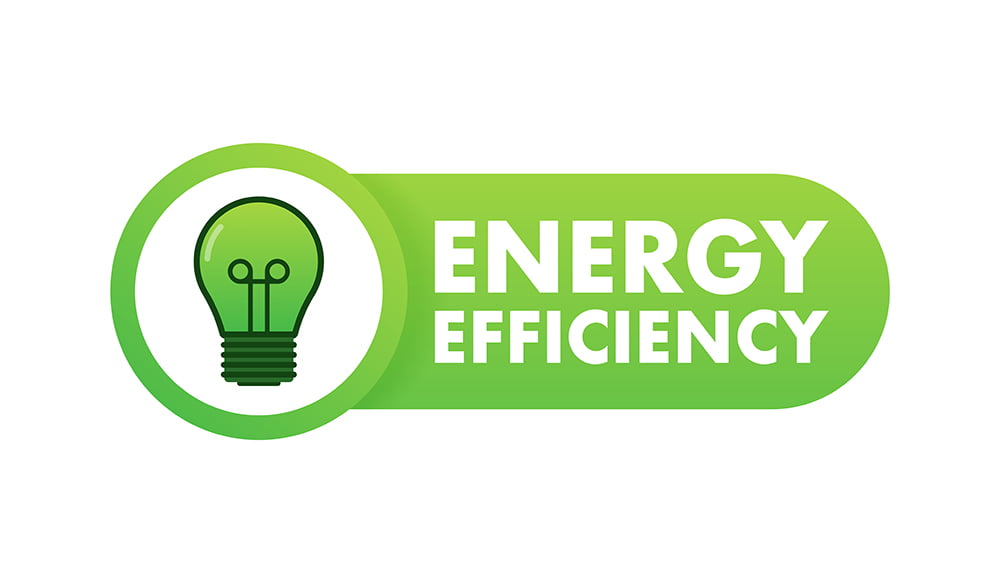
Insulated metal panels offer a myriad of benefits. The primary one being that they combine the functions of both insulation and structural sheathing into a single product, reducing build time, labor costs, and materials.
Their ease-of-installation makes them a favoured option for many garage owners. Their improved energy efficiency due to their high R-values helps save on heating and cooling costs, contributing to the long-term sustainability of the building.
These panels also exhibit excellent fire-resistant properties, enhancing the safety aspect of your garage. In instances of heavy noise traffic, insulated panels also provide superior acoustic insulation.
Their sleek aesthetic enhances the overall appearance of your garage, and they resist dents and scratches better than traditional insulation materials. Lastly, the panels’ closed-cell nature acts as a deterrent against moisture penetration, thereby reducing condensation and the risk of mold growth.
Improving Energy Efficiency With Insulation
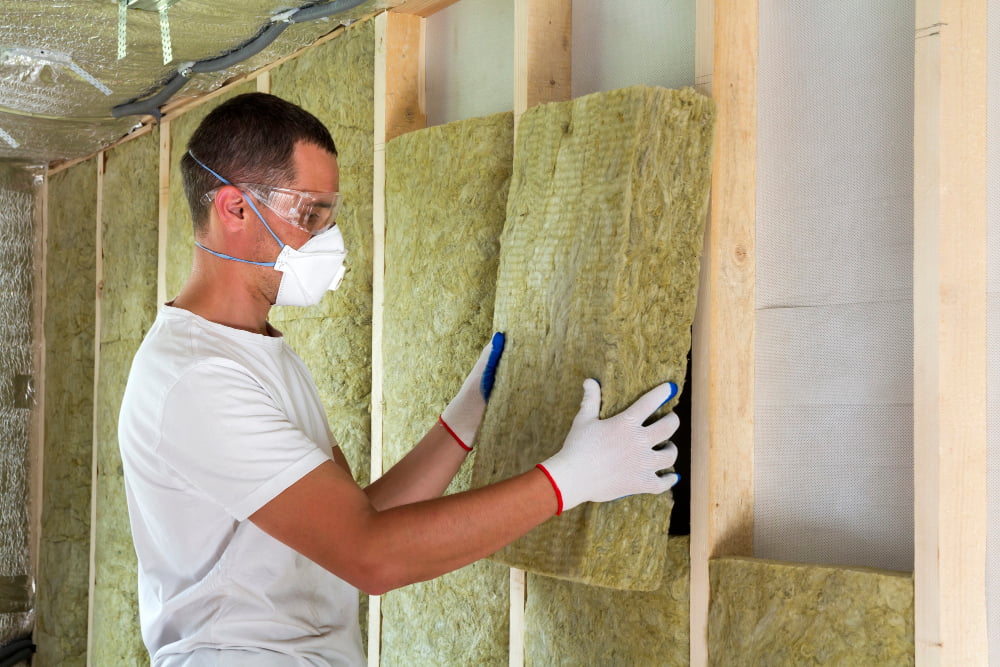
Pumping up your insulation game directly translates to an energy-efficient garage. Here’s why:
1. Insulation acts as a thermal barrier, reducing the amount of heat exchange between the inside of the garage and the outside environment, thus requiring less energy to heat or cool the space.
2. The right type of insulation can prevent air leakage, another potential source of energy loss. Air leaks allow warm air to escape in the winter and enter in the summer, leading to an increase in energy use.
3. By insulating all portions of the garage, including the doors and windows, you can further optimize energy savings.
4. A properly insulated garage can help balance the indoor temperature, reducing the workload on your HVAC system and saving energy.
5. Insulation results in less reliance on artificial heating and cooling, which not only diminishes your utility bill but also reduces your carbon footprint, helping the environment.
Remember, an energy-efficient garage is not only good for your wallet but also our planet. Reduce energy waste and enhance efficiency with appropriate garage insulation.
Increasing Indoor Air Quality With Insulation
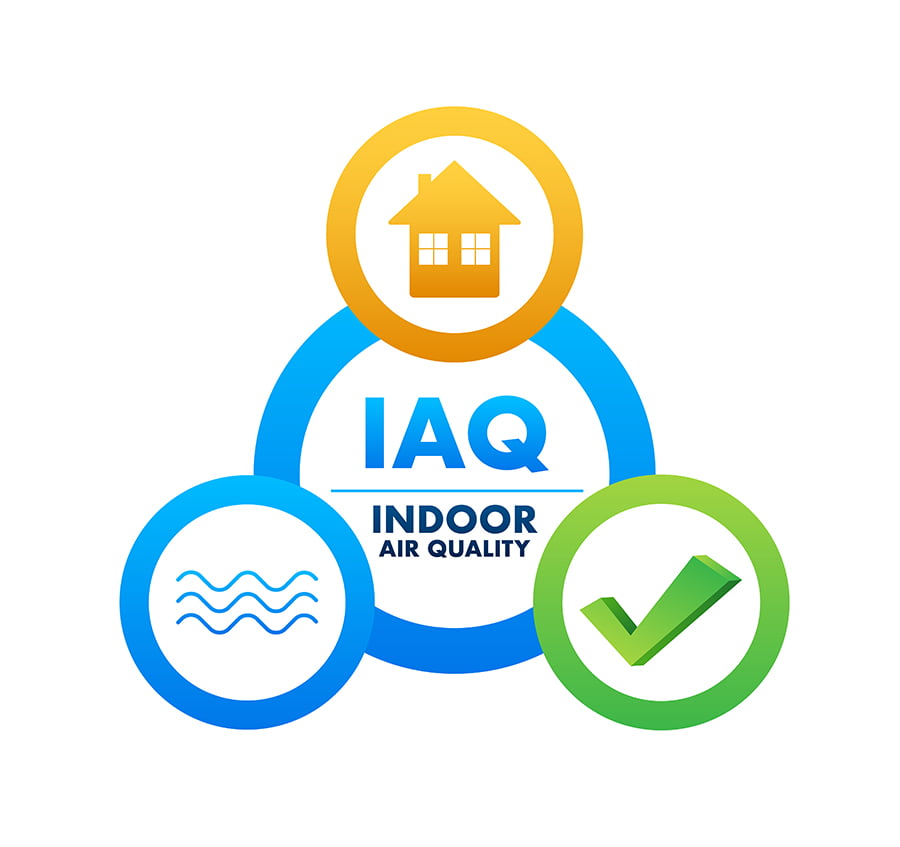
With proper insulation, pollutants, allergens, and moisture are less likely to infiltrate the garage, promoting healthier air conditions. A watertight insulation layer prevents the growth of mold and mildew, which poses health risks and compromises air quality.
Additionally, specific insulating materials have low volatile organic compound (VOC) emissions, reducing harmful substances in your garage air. Incorporating adequate ventilation strategies when installing insulation further enhances air quality by reducing excess humidity and preventing condensation, leading to a cleaner, healthier air milieu.
Controlling Indoor Temperature With Insulation
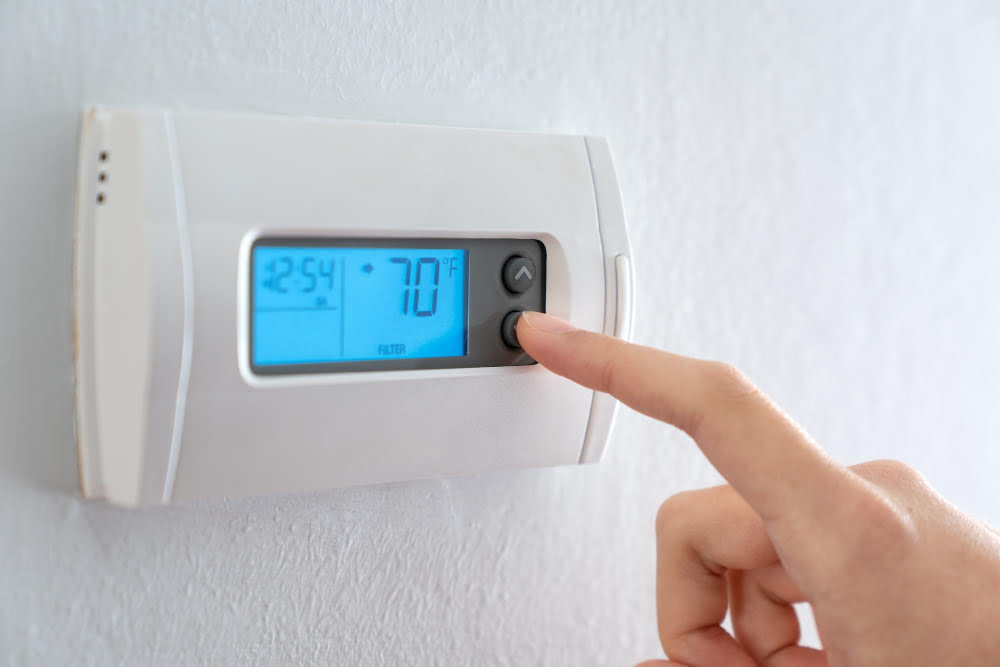
By having a well-insulated garage, hot and cold air from outside won’t have a free pass to change the internal temperature, thus creating a more steady indoor climate.
1. Insulation delivers a thermal barrier, reducing heat exchange with the exterior.
2. Establishing it as part of your garage’s structure means energy isn’t wasted regulating temperatures.
3. In colder months, insulation holds warm air produced by heaters inside the garage.
4. In warmer months, it prevents hot external air from seeping into the garage.
5. Garage doors with effective insulation can also cut down on energy loss.
As a result, insulation serves to create an energy-efficient environment that makes your garage a more comfortable and functional space year-round.
How Insulation Can Increase the Value of Your Metal Garage

Proper insulation can elevate your garage’s market appeal for several reasons. For starters, it results in remarkable energy savings. A well-insulated garage retains heat in winter and repels it during summer, reducing the load on your heating, ventilation, and air conditioning (HVAC) system. Thus, it essentially slashes your energy expenditures.
Improved comfort is another influential aspect. Insulation aids in regulating temperature, making the garage more comfortable year-round, thereby creating a space that can function beyond being a mere car-park. It could serve as a workshop, a recreation area, or even a home office.
Furthermore, insulation helps suppress noise, which can be a significant advantage if you live in a noisy neighborhood or if you use tools in the garage that create a lot of noise. Soundproofing can be a massive selling point for prospective buyers.
Additionally, the diminished moisture levels in a properly insulated garage can prevent corrosion and rust, prolonging the lifespan of tools, vehicles, and the garage itself. Prospective homeowners would appreciate the long-term savings this feature offers.
Lastly, green-minded buyers consider energy efficiency when purchasing a property, so an insulated garage can be a substantial asset in reducing the buildings’ carbon footprint.
FAQ
What is the best way to insulate a metal garage?
The best way to insulate a metal garage is by employing radiant barrier insulation, due to its durability, energy-efficiency, and the ease of removal.
What kind of insulation do you use in a metal garage?
The ideal type of insulation for a metal garage is fiberglass, although it can sometimes attract nesting pests and absorb moisture.
What is the cheapest way to insulate a metal garage?
The most cost-friendly method to insulate a metal garage is by using fiberglass batt insulation, due to its widespread availability, affordable cost, and ease of installation.
Is insulating a metal garage worth it?
Yes, insulating a metal garage is worth it as it manages severe temperature swings and prevents issues like condensation, rust, corrosion, mold, and mildew.
How does insulation affect the temperature control in a metal garage?
Insulation in a metal garage helps regulate temperature by reducing heat transfer, keeping the garage warmer in winter and cooler in summer.
How can insulation material selection impact a metal garage’s energy efficiency?
The insulation material selection can significantly impact a metal garage’s energy efficiency as the right choice can reduce heat transfer, minimize energy consumption, and maintain optimal indoor temperature.
What are the key steps in the process of insulating a metal garage?
The key steps in insulating a metal garage include selecting the right insulation material, measuring the garage’s dimensions, cutting the insulation to fit, affixing the insulation to your garage walls and ceiling, and sealing any gaps with caulk or spray foam.